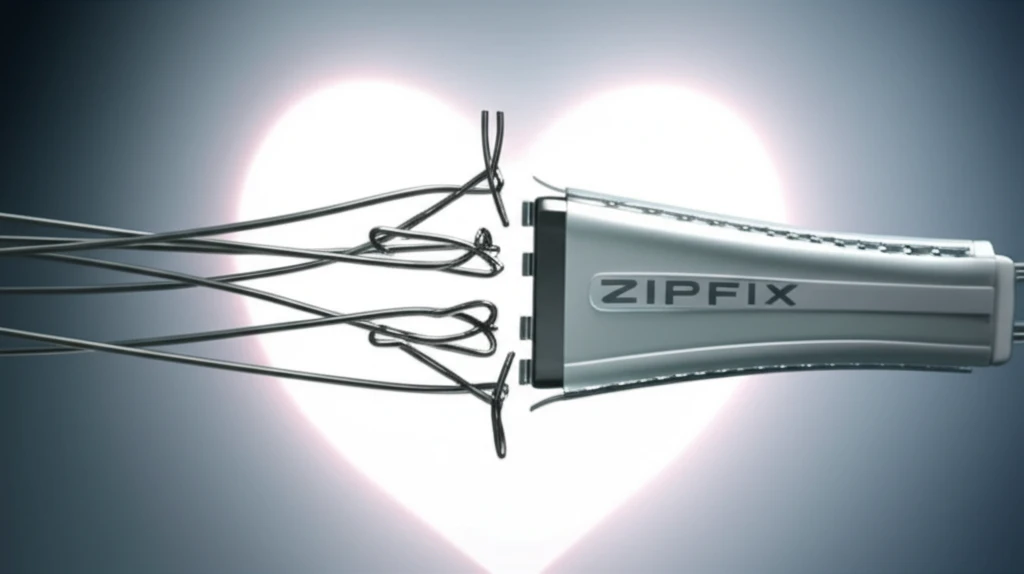
Sternal Closure Face-Off: ZipFix vs. Traditional Wire – Which Method Wins?
"A one-year follow-up study reveals surprising insights into pain levels, dehiscence rates, and overall patient comfort after sternotomy."
For decades, closing the sternum after open-heart surgery has relied on stainless steel wires, a method considered the gold standard due to its simplicity and low cost. However, this approach isn't without its downsides. Complications like dehiscence (separation of the sternal edges) and infections can lead to reoperations and prolonged recovery times. This has fueled the search for better solutions.
One promising alternative is the ZipFix system, a biocompatible, cable-tie-based sternal closure device made from poly-ether-ether-ketone (PEEK). ZipFix offers potential advantages like flexibility, ease of use, and strong, stable closure. But does it truly outperform traditional wires in the long run? Does it translate to tangible benefits for patients?
A recent study published in Heart, Lung and Circulation compared the outcomes of patients undergoing sternal closure with either ZipFix or conventional steel wires. Over a year-long follow-up, researchers tracked pain levels, dehiscence rates, and infection rates to determine which method truly comes out on top. This article unpacks the study's findings, revealing whether ZipFix lives up to the hype and offering valuable insights for anyone considering or facing sternal closure.
ZipFix vs. Traditional Wire: A Head-to-Head Comparison

The study, a randomized controlled trial, involved 326 patients undergoing cardiac surgery. After the sternotomy, patients were randomly assigned to have their sternum closed with either ZipFix (168 patients) or conventional steel wires (158 patients). Researchers then meticulously followed both groups, assessing them at one, three, six, and twelve months post-discharge.
- Pain Severity: Measured using a visual analog scale (VAS) where patients rated their pain levels during cough.
- Sternal Dehiscence: Evaluated based on clinical findings such as sternal clicking or instability during respiration or coughing.
- Infections: Both incisional (superficial and deep) and organ/space infections (mediastinitis or osteomyelitis) were diagnosed according to established guidelines.
The Verdict: Is ZipFix the Future of Sternal Closure?
The study's findings suggest that ZipFix offers significant advantages over conventional wire closure, particularly in reducing pain and the risk of sternal dehiscence. While infection rates were similar between the two groups, the overall benefits of ZipFix make it a compelling alternative for patients undergoing sternotomy.
Of course, this study is just one piece of the puzzle. Further research with larger sample sizes and higher-risk patients is needed to confirm these findings and explore the long-term outcomes of ZipFix closure. Cost-effectiveness is another crucial consideration, as ZipFix is currently more expensive than traditional wires.
Ultimately, the choice between ZipFix and conventional wire closure should be made on a case-by-case basis, considering the individual patient's risk factors, preferences, and the surgeon's expertise. However, this study provides valuable evidence that ZipFix has the potential to improve patient outcomes and revolutionize sternal closure techniques.
